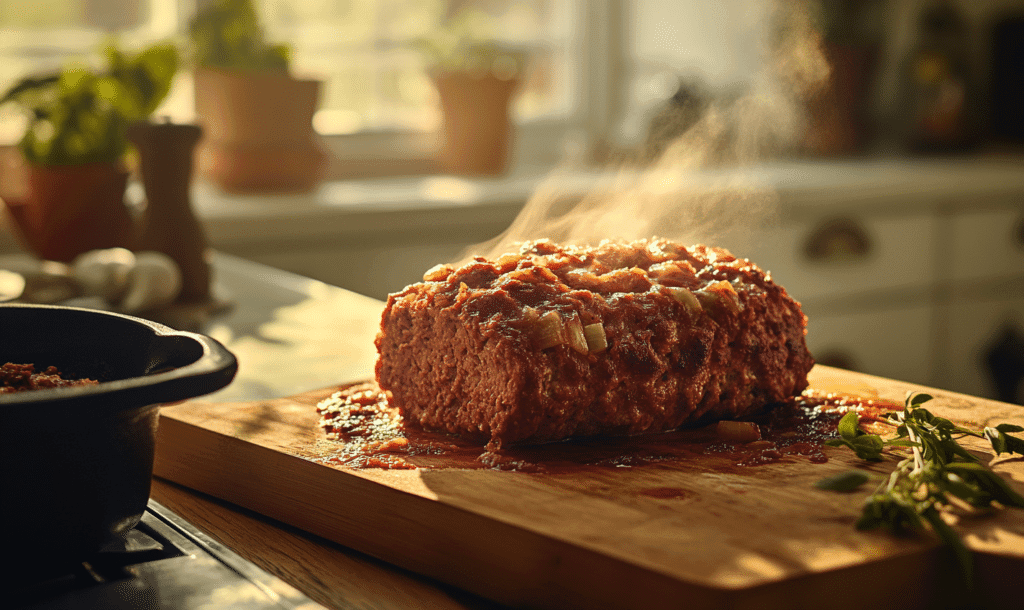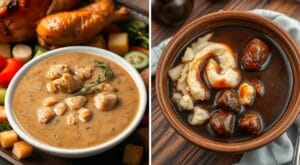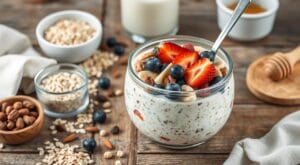Jump to:
Estimated reading time: 13 minutes
Table of contents
Introduction
Cooking meatloaf on a pellet grill offers a unique blend of flavors that transforms a traditional comfort food into a smoky, mouthwatering dish. While the ingredients and preparation of meatloaf are straightforward, the key to achieving the perfect meatloaf lies in the cooking process, particularly the temperature. When using a pellet grill, understanding the right temperature settings and cooking times is crucial for ensuring that your meatloaf is cooked evenly, remains juicy, and has that irresistible smoky flavor.
In this comprehensive guide, we will explore the ideal temperatures for cooking meatloaf on a pellet grill, how to set up your grill, tips for monitoring the internal temperature, and additional tips to achieve the best results. Whether you’re new to pellet grilling or a seasoned pro, this article will provide all the insights you need to perfect your meatloaf cooking technique.
Understanding the Basics of Cooking Meatloaf on a Pellet Grill
Before diving into the specific temperatures, it’s important to understand the basics of cooking meatloaf on a pellet grill. Unlike traditional ovens, pellet grills use wood pellets to create both heat and smoke. This dual function allows the grill to cook the meatloaf evenly while infusing it with a delicious smoky flavor.
When cooking meatloaf on a pellet grill, achieving the perfect temperature is crucial for that delicious smoky flavor and juicy texture. For a more flavorful approach, you might want to explore the nuances of smoking your meatloaf, as detailed in this insightful guide on smoked meatloaf, A Flavorful Twist on a Classic Comfort Food. This resource provides valuable tips on how to maintain the right cooking temperature and enhance the flavor of your meatloaf using a pellet grill.
How Pellet Grills Work
Pellet grills operate by burning wood pellets in a combustion chamber, which creates heat that is circulated throughout the grill by a fan. The grill’s digital control system allows you to set and maintain a specific temperature, ensuring consistent cooking. The wood pellets not only provide heat but also impart a smoky flavor that enhances the taste of your meatloaf.
One of the key advantages of pellet grills is their ability to maintain a consistent temperature, which is crucial for cooking meatloaf. Unlike charcoal grills, which can experience fluctuations in temperature, pellet grills offer precise temperature control, making it easier to achieve perfectly cooked meatloaf.
Why Temperature Matters while cooking Meatloaf on a Pellet Grill
The temperature at which you cook meatloaf on a pellet grill directly affects the texture, moisture, and flavor of the finished dish. If the temperature is too high, the meatloaf may cook too quickly on the outside while remaining undercooked on the inside. Conversely, if the temperature is too low, the meatloaf may dry out during the extended cooking time.
Finding the right balance is key to ensuring that your meatloaf is cooked evenly throughout, with a tender, juicy interior and a slightly crisp, flavorful crust. Additionally, cooking at the correct temperature allows the smoke from the wood pellets to fully permeate the meat, enhancing the overall flavor.
What Temperature to Cook Meatloaf on a Pellet Grill?
The Ideal Temperature Range
For cooking meatloaf on a pellet grill, the ideal temperature range is between 225°F and 250°F (107°C to 121°C). This range allows the meatloaf to cook slowly and evenly, ensuring that the interior reaches the desired temperature without overcooking the exterior. Cooking within this range also gives the meatloaf plenty of time to absorb the smoky flavors from the wood pellets, resulting in a deeply flavored dish.
Why 225°F is a Popular Choice
Many pitmasters and home cooks prefer cooking meatloaf at 225°F (107°C). This temperature is often considered the “sweet spot” for smoking meats, including meatloaf. At this lower temperature, the meatloaf cooks slowly, allowing the smoke to fully penetrate the meat. The result is a juicy, tender meatloaf with a rich smoky flavor.
Cooking at 225°F also gives you greater control over the cooking process. Because the meatloaf cooks more slowly, there’s less risk of overcooking, and you can monitor the internal temperature more closely to achieve the perfect doneness.
When to Use 250°F
Cooking meatloaf at 250°F (121°C) is another excellent option, particularly if you’re short on time. While the meatloaf will cook slightly faster at this temperature, it will still benefit from the slow-cooking process that allows the smoke to infuse the meat. The higher temperature also helps to develop a nice crust on the exterior of the meatloaf, adding texture and flavor.
However, when cooking at 250°F, it’s important to keep a close eye on the internal temperature of the meatloaf to avoid overcooking. You may need to check the temperature more frequently as the meatloaf nears the end of its cooking time.
Internal Temperature for Doneness
Regardless of the cooking temperature you choose, the most important factor in determining when your meatloaf is done is the internal temperature of the meat. The USDA recommends that ground meat, including meatloaf, be cooked to an internal temperature of 160°F (71°C) to ensure that it is safe to eat.
To check the internal temperature, insert a meat thermometer into the center of the meatloaf. Be sure to avoid touching the sides of the grill or the bottom of the pan with the thermometer, as this can give you an inaccurate reading. Once the internal temperature reaches 160°F, your meatloaf is ready to be removed from the grill.
Resting the Meatloaf
After cooking, it’s important to let the meatloaf rest for about 10-15 minutes before slicing. Resting allows the juices to redistribute throughout the meat, ensuring that each slice is moist and flavorful. During this time, the internal temperature of the meatloaf may rise slightly, so it’s a good idea to remove the meatloaf from the grill when it reaches about 155°F (68°C) and let it finish cooking as it rests.
Setting Up Your Pellet Grill for Cooking Meatloaf
Preheating the Grill
Before placing your meatloaf on the pellet grill, it’s essential to preheat the grill to your desired cooking temperature. This ensures that the grill is at a stable temperature when you start cooking, which is key to achieving even cooking results.
- Fill the Hopper with Wood Pellets: Choose wood pellets that complement the flavor of your meatloaf. Hickory, applewood, and cherry are popular choices for meatloaf, as they impart a sweet, smoky flavor without overpowering the meat.
- Set the Temperature: Using the grill’s control panel, set the temperature to 225°F or 250°F, depending on your preference. Allow the grill to preheat for at least 10-15 minutes to reach the desired temperature.
- Prepare the Grill Grates: While the grill is preheating, brush the grill grates with a high-heat cooking oil to prevent the meatloaf from sticking. You can also place a piece of parchment paper or a grill mat under the meatloaf to catch any drippings.
Using a Drip Pan
To prevent flare-ups and keep your grill clean, consider using a drip pan underneath the meatloaf. This pan will catch any grease or juices that drip from the meatloaf as it cooks. You can also add a small amount of water, broth, or even beer to the drip pan to create steam, which can help keep the meatloaf moist during the cooking process.
Choosing the Right Pellets
The type of wood pellets you use can have a significant impact on the flavor of your meatloaf. Here are some popular options:
- Hickory: Provides a strong, bold smoke flavor that pairs well with the rich taste of meatloaf.
- Applewood: Offers a sweeter, milder smoke that complements the savory flavors of the meat.
- Cherry: Adds a fruity, slightly sweet smoke that enhances the overall flavor profile of the meatloaf.
- Oak: Delivers a medium smoke flavor that works well with a variety of meats, including meatloaf.
- Maple: Imparts a subtle sweetness that can balance the savory and smoky notes in the meatloaf.
Feel free to experiment with different types of wood pellets to find the flavor profile that best suits your taste.
Placing the Meatloaf on the Grill
When placing the meatloaf on the grill, position it in the center of the grill grate, away from direct heat. This ensures that the meatloaf cooks evenly and absorbs the smoke from the wood pellets. If your pellet grill has multiple cooking racks, use the middle rack for the meatloaf to prevent it from cooking too quickly on the bottom.
Close the grill lid and begin cooking. It’s important to resist the temptation to open the lid frequently, as this can cause fluctuations in temperature and extend the cooking time. Instead, check the internal temperature periodically using a meat thermometer.

Monitoring the Cooking Process
Using a Meat Thermometer
A reliable meat thermometer is essential for monitoring the internal temperature of your meatloaf. Digital thermometers with probes are particularly useful, as they allow you to monitor the temperature without opening the grill. Some pellet grills even come with built-in temperature probes that can be connected to the grill’s control panel, making it easy to keep track of the meatloaf’s progress.
Checking the Internal Temperature
As mentioned earlier, the internal temperature of the meatloaf should reach 160°F (71°C) for safe consumption. To ensure accurate readings, insert the thermometer probe into the thickest part of the meatloaf, avoiding contact with the grill grates or any fillings you may have added to the meatloaf.
If you find that the meatloaf is cooking too quickly on the outside while the inside is still undercooked, you can lower the grill temperature slightly or tent the meatloaf with aluminum foil to prevent it from over-browning.
Adding a Glaze
For an extra layer of flavor, consider adding a glaze to your meatloaf during the last 30 minutes of cooking. A classic BBQ glaze made from ketchup, brown sugar, and a splash of apple cider vinegar pairs beautifully with the smoky flavor of the meatloaf. Brush the glaze evenly over the top and sides of the meatloaf, then close the grill lid and let it caramelize.
Adding the glaze towards the end of the cooking process ensures that it doesn’t burn, while still allowing it to develop a rich, sticky coating that enhances the flavor and appearance of the meatloaf.
Additional Tips for Perfect Pellet Grill Meatloaf
Keep the Meatloaf Moist
Maintaining moisture is key to a delicious meatloaf. Here are a few tips to ensure your meatloaf stays juicy:
- Use a Combination of Meats: A mixture of ground beef and pork (or veal) provides a balance of fat and flavor that keeps the meatloaf moist. The fat from the pork or veal helps to prevent the meatloaf from drying out during the long cooking process.
- Add Moisture-Rich Ingredients: Incorporate ingredients like onions, garlic, and vegetables into the meatloaf mixture. These not only add flavor but also contribute moisture to the meatloaf.
- Include a Binder: Eggs and breadcrumbs act as binders, helping to hold the meatloaf together while also retaining moisture. Soaked breadcrumbs or panko crumbs can be particularly effective in keeping the meatloaf tender.
- Don’t Overmix the Meat: When combining the ingredients, be careful not to overmix the meat mixture, as this can lead to a dense, tough meatloaf. Mix just until the ingredients are evenly distributed.
Create a Flavorful Crust
One of the highlights of a well-cooked meatloaf is the flavorful crust that forms on the outside. To enhance the crust, consider the following:
- Brush with Oil: Before placing the meatloaf on the grill, brush the outside with a little olive oil or melted butter. This helps the exterior brown more evenly and contributes to a rich, golden crust.
- Use a Dry Rub: For added flavor, sprinkle the outside of the meatloaf with a dry rub made from your favorite spices. A mixture of paprika, garlic powder, onion powder, and black pepper works well and adds a subtle kick to the crust.
- Baste with BBQ Sauce: As mentioned earlier, basting the meatloaf with BBQ sauce during the last 30 minutes of cooking creates a delicious, sticky glaze that enhances the crust’s flavor and texture.
Resting the Meatloaf
Don’t skip the resting period! Allowing the meatloaf to rest for 10-15 minutes after cooking is crucial for retaining moisture. As the meatloaf rests, the juices redistribute throughout the meat, ensuring that every slice is tender and juicy. Resting also makes the meatloaf easier to slice without it falling apart.
FAQ About Cooking Meatloaf on a Pellet Grill
Can I Cook Meatloaf at a Higher Temperature?
While it’s possible to cook meatloaf at a higher temperature, such as 300°F (149°C), doing so can result in a shorter cooking time but may lead to a less tender and less smoky final product. Higher temperatures can cause the exterior of the meatloaf to cook too quickly, potentially leaving the inside undercooked.
If you’re in a hurry, consider cooking the meatloaf at 250°F (121°C) instead of 225°F (107°C). This slightly higher temperature will still allow the meatloaf to cook evenly while maintaining a tender texture and smoky flavor.
How Long Does It Take to Cook Meatloaf on a Pellet Grill?
The cooking time for meatloaf on a pellet grill will vary depending on the size and thickness of the meatloaf, as well as the cooking temperature. On average, a 2-pound meatloaf cooked at 225°F (107°C) will take about 3 hours to reach an internal temperature of 160°F (71°C). If you’re cooking at 250°F (121°C), the cooking time may be reduced to about 2.5 hours.
Always use a meat thermometer to check the internal temperature and ensure that the meatloaf is fully cooked before removing it from the grill.
Can I Cook Mini Meatloaves on a Pellet Grill?
Yes, mini meatloaves are a great option if you’re short on time or want individual portions. Mini meatloaves cook faster than a full-sized meatloaf, typically taking about 1 to 1.5 hours at 225°F (107°C).
To cook mini meatloaves on a pellet grill, follow the same steps as you would for a full-sized meatloaf, adjusting the cooking time accordingly. Keep a close eye on the internal temperature to avoid overcooking.
Conclusion: Meatloaf on a Pellet Grill
When cooking meatloaf on a pellet grill, it’s essential to monitor the internal temperature closely to achieve the best results. A good rule of thumb is to preheat your grill to 350°F and cook the meatloaf until it reaches an internal temperature of 165°F, as outlined in this detailed guide on How to Make the Best Bacon Smoked Meatloaf on a Pellet Grill. For perfect temperature control, consider using an instant-read meat thermometer, which ensures your meatloaf is cooked to perfection. Pair your smoked meatloaf with delicious sides like Smoked Baked Beans with Ground Beef and Bacon for a complete, satisfying meal.
Cooking meatloaf on a pellet grill is a rewarding experience that adds a new dimension of flavor to this classic dish. By cooking at the right temperature—between 225°F and 250°F—you can achieve a tender, juicy meatloaf with a rich smoky flavor that’s sure to impress.
Remember to monitor the internal temperature carefully, use the right wood pellets for your desired flavor, and allow the meatloaf to rest before slicing. With these tips and techniques, you’ll be well on your way to mastering the art of cooking meatloaf on a pellet grill.
Whether you’re preparing a family dinner, hosting a BBQ, or simply experimenting with new cooking methods, this guide provides all the information you need to create the perfect smoked meatloaf. Enjoy the process, and savor the delicious results!






